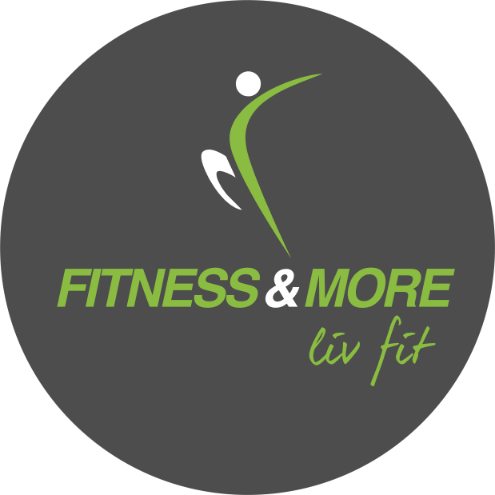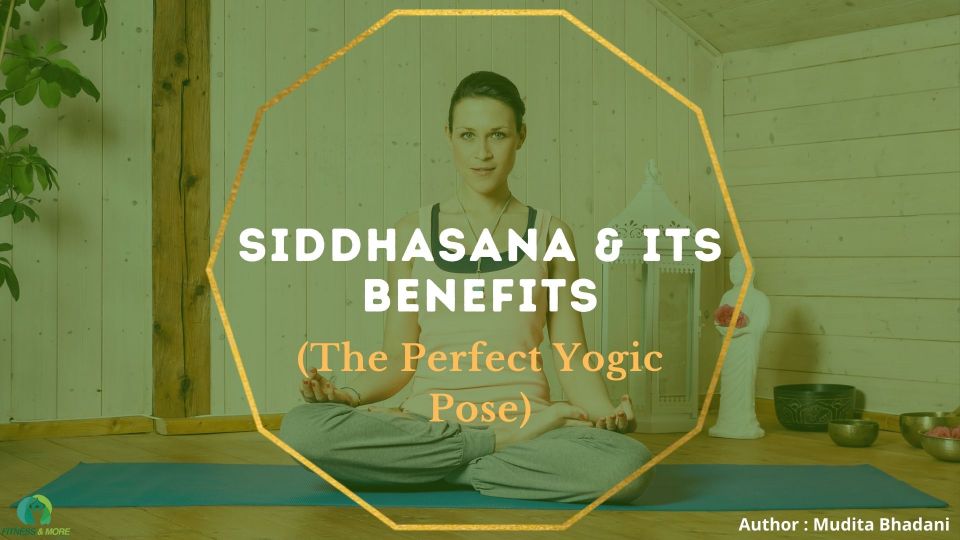छतुरशीत्यासनानन नशवेन कनितानन छ |
तेभ्यश्छतुष्ह्कमादाय सारभूतं बरवीम्यहम|| ३३ ||
नसद्धं पद्मं तिा नसंहं भद्रं वेनत छतुष्ह्टयम |
शरे ष्ह्ठं तत्रानप छ सुखेनतष्ह्ठे त्सिद्धासनेसदा || ३४ ||
Meaning: Siva has taught 84 asanas. From these asanas, four asanas are very powerful. These four
are (1) Siddha, (2) Padma, (3) Sinha and (4) Bhadra. Even of these, the Siddhasana, being very
comfortable, one should always practice it. (Verse 33, 34- Hatha Yoga Pradipika)
Siddhasana, like Padmasana, is one of the most ancient asanas. It is one of the sitting postures, which is mainly used by Yogis for Dhyana & Meditation and to achieve the ultimate goal of Yoga i.e Samadhi. People of all ages can perform it.
Various Yoga practitioners consider this asana as the most effective sitting posture as it helps in
increasing the strength and flexibility of hips, thighs and ankles and it affects the entire body.
Why Siddhasana?
One of the important questions that arise here is why Siddhasana is also relevant for common people, other than Yogis or people who are not onto the path of spirituality. The answer lies in the act that continuous practise of this asana stretches the hips, abductor, knees and ankles. It is a good hip opener exercise. Further, it helps to reduce stress and anxiety level.
As per Hatha Yoga Pradipika, the practice of this pose purifies all the 72,000 Nadis or energy channels within the body, by which the prana flows. Further, it is also called as chief of other asanas.
What is Siddhasana?
The word Siddhasana consists of two Sanskrit words, Siddha and Asana. Siddha means to achieve, adept or perfect and Asana means “posture”. According to Patanjali Yoga Sutra, Siddhas are those persons who have achieved physical as well as spiritual perfection or enlightenment or in other words who have attained various Siddhis.
This asana is called Siddhasana as it is said that a Yogi can achieve Siddhis and can attain enlightenment through continuous practice of this asana.
This posture is also called an Accomplished pose or Perfect Pose.
Siddhasana as per various scriptures:
- Hatha Yoga Pradipika
Chapter 1, Verse 35 to 43 explains the posture along with its benefits.
Press firmly the heel of the left foot against the perineum, and put the right heel above the genitals. With the chin pressing on the chest, sit calmly, restrain the senses, and gaze steadily in the space between the eyebrows. This is called the Siddhasana, the opener of the door of salvation. (Verse 35)
Placing the heel above the penis and the other (heel) on top of that is Siddhasana. (Verse 36). –This is the description of Guptasana, but as per Hatha Yoga Pradipika, it is called Siddhasana. This is called Siddhasana, others know it, as Vajrasana, some call it Muktasana and lastly it is called Guptasana. (Verse 37). – It explains that Vajrasana, Muktasana, and Guptasana is also a synonym for the posture of Siddhasana. However, in modern yoga, the postures mentioned above are different.
Siddhasana is one of the most important asanas which should always be practised. It purifies 72,000 nadis of the body. It further explains that food is very essential for the body to function, like ways, Siddhasana is very essential asana for the Yogi to realize or discover its true nature and achieve the ultimate goal of his life. (Verse 38 to 43)
- Gheranda Samhita
Chapter 2. Verse 7
Meaning: The practitioner who has subdued his passion, having placed one heel at the anal aperture should keep another heel on the root of generative organs, placing the chin on the chest, (remaining) motionless with Indriyas (senses) under control, and gaze directed towards the middle of the eyebrows. This is called Siddhasana and leads to emancipation.
- The posture has also been described in various texts such as Shiva Samhita (Chapter 3, Verse 84 to 87), Gorakha Sataka etc.
All these scriptures, teach that Siddhasana is the most powerful asana of all other asanas,
which helps Yogi to control his body, senses and mind and helps to purify the body, which in
turn helps Yogi to further.
Benefits of Siddhasana
This posture has a lot of physical, mental and spiritual benefits. Some of the major benefits are as follows:
Physical benefits
- One of the most powerful asanas for meditation
- It strengthens the back muscles and spinal cord
- It strengthens the hips, abductors, knees and ankles and increases the flexibility in said parts
- It improves the posture of the body
- It relaxes the entire body and helps in removing fatigue
- It purifies all 72,000 nadis of the body as the heel is kept against the perineum and helps in activating Sushumna.
- It redirects blood circulation to the lower spine and abdomen and balances the reproductive system and blood pressure.
Mental Benefits
- Regular practice with a focus on the nose or third eye helps to increase our focus and concentration
power - It directs the energy upward through the spine, stimulating the brain and calming the entire nervous system.
- It relaxes our mind and body and reduces the stress level
- It helps to increase the awareness of the body
Other Benefits
- It helps in the practice of Brahmacharya for spiritual purposes as it stimulates the reproductive organs of the body.
- This posture helps in activating the Ajna, Swadisthana and Mooladhar chakras by channelizing energy to Ajna Chakra from the base.
- It helps to handle the changes that take place in the body during deep meditation
Preparatory poses
People whose lower body is not flexible can start with the following poses:
- Butterfly pose
- Dandasana.
- Sukhasana
- Ardha Siddhasana
Who should not do Siddhasana?
- People who are suffering from any knee, or ankle injuries should not perform this pose
- If you are having slipped disc, sciatica or sacral problems, then you should try avoiding doing the pose
- Try to keep your spine straight and elongated while performing this asana
- Do not sit in this posture, if you are feeling any discomfort in this pose
How long can it be done?
Starting a practice can be done for 2-3 minutes which can be extended to 15-20 minutes. Further, when the body gets accustomed to this pose one can sit in this posture for longer periods.
Steps to perform Siddhasana
- Sit on the floor in the Dandasana position with your legs stretched outwards.
- Bend your left leg and bring your left sole near the inner thigh with the heel pressing the anus.
- Bend your right leg and place the heel and the ankle of the right leg on the heel and ankle of the left leg.
- Tuck the fingers of the right leg in the space between the thigh and calf muscles of the left leg to provide stability.
- Both the knee should touch the ground. If not possible to touch then do not force it down. Try to sit on a cushion so that the hips are positioned above the knees.
- The spine should be kept straight and erect. Chin can be kept parallel to the floor or it can be pressed against the chest. The body should be in a straight line.
- Put both the palms on the knee in Gyan Mudra (thumb touching the tip of the index finger and other fingers straight facing up).
- Deep inhale and exhale in the same position and feel a deep breath. Keep your eyes closed and try to focus on your nose or in the middle of your eyebrows.
After some time, do the same posture by changing the legs
How to start for beginners
- The beginners, who are not able to sit in this position, may keep sitting on a blanket or cushion so that the hips are a level up from the knees.
- In case you are facing any discomfort while putting both ankles on one another, a cloth can be put in between both ankles to reduce discomfort.
- Beginners can also start with Ardha Siddhasana, wherein only one foot is placed pressing the perineum and the other feet are placed on the floor. Once, the person is comfortable in this posture, he can start with Siddhasana.
- Try to keep your spine straight. If you are not able to keep your spine straight, try sitting straight by taking support of the wall. In case, still, you find it difficult, put a pillow against the wall and take support of the pillow.
- In case you are not able to concentrate during this position or feel sleepy, try focusing on the inhalation and exhalation and their impact on the chest, stomach and spine. For starting you can try with your eyes open and concentrating on a single point.
Caution
While it is a very easy pose and provides a lot of benefits, if you have any knee, ankles or hip injuries or pains, it is advisable to avoid it or to do it after consulting with a yoga trainer. Further, in case you are feeling pains while or after doing this pose, do consult your Yoga trainer before continuing the practice. Do remember that everybody is different and the impact of asanas on everybody is different.
HAPPY DOING YOGA!!


Inspirational article 😍
Thank you 😊💝